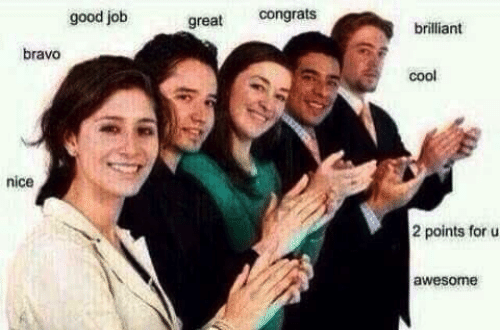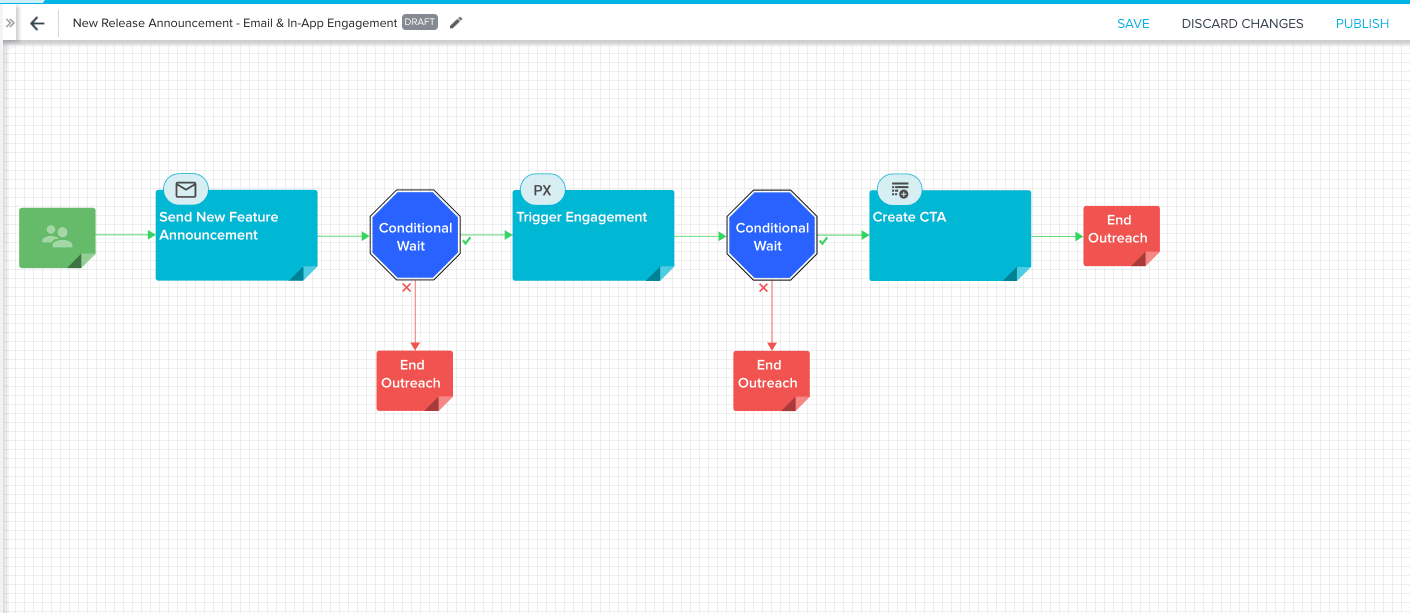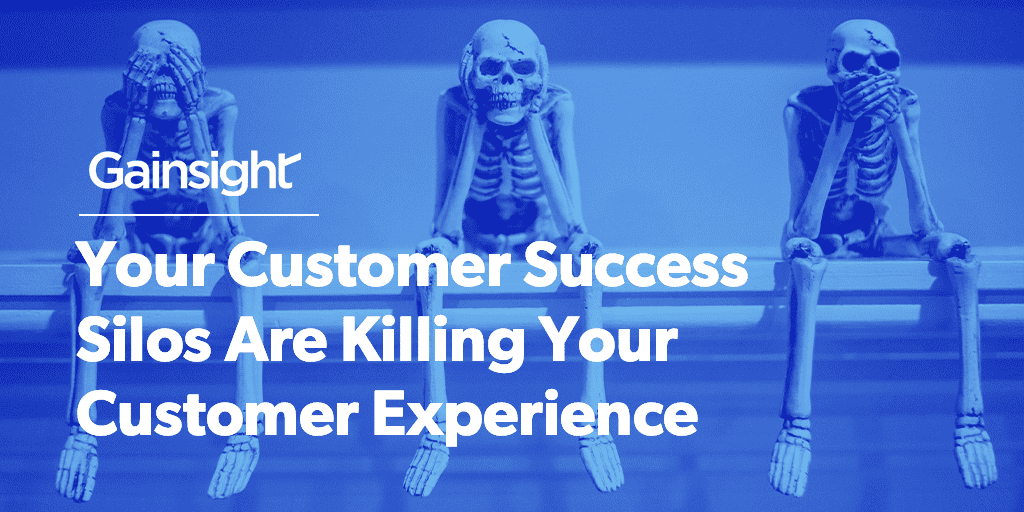I recently had a fun/not-fun experience with one of the big event ticketing companies. Love them or hate them (hi, Taylor Swift), you kind of have to use this sort of company for most sporting events.
I was going to a football game with a friend, and my buddy shared my ticket with me. In the 30-minute Uber to get to the game, I planned to spend 29 minutes listening to podcasts and one minute getting my tickets.
You know what happened next…
30 minutes in the car and a bunch of swearing to myself later, I still hadn’t figured out how to retrieve my tickets. On the plus side, I got really good at the “forgot my password” workflow.
Eventually, after about 45 minutes, I figured it out and got into the game.
But an interesting thing happened along the way. This ticket vendor had instrumented the heck out of its customer experience. Every time I logged in, I got the same “Welcome to [company name]” pop-up in the app. When I went to the website, I was greeted with another “welcome” guide each time. And completely unrelated, I got a feedback survey via email. And believe me, this company did NOT want my feedback.
Altogether, they took a bad customer experience and made it worse through a lot of efforts to “engage” me. And maybe, in some database somewhere, I’m a success story—I got my tickets, super-high engagement, 45 minutes spent in-app, numerous log-ins.

Why do I bring this up? This type of experience isn’t endemic to ticket apps or even B2C. I see the same risk in B2B businesses.
How businesses are over-engaging and under-engaging customers—at the same time
Since the previous era, when B2B companies largely ignored their customers post-sale, we’ve swung the pendulum too far the other way. Now, many companies have:
- CSMs reaching out to customers to drive adoption.
- Product teams putting guides into applications.
- Marketing teams blasting existing customers.
And for the vast majority of companies, the proverbial “left hand” and “right hand” don’t talk to each other.
A customer can tell a CSM that a given new feature isn’t a fit. Nonetheless, the next time the customer logs into the product, they get a guide for that new feature. And then an email for a marketing webinar about the new feature might show up in their inbox the next day.
Keep in mind, you might be simultaneously overengaging with your customers and still missing engagement opportunities! In my ticketing example, there was an opportunity to give me a great experience with a right-time, right-message engagement. Instead, I was inundated with unhelpful outreaches.
But what’s the answer?
Solving a fragmented customer experience
We need to stop thinking about CSM, in-product, and Marketing emails as separate strategies. We need to destroy those silos.
Instead, we need a target customer journey for a given goal (e.g. adopting a new feature, onboarding) and a coordinated usage of channels (CSM, in-app, email) to help the customer get to the next best action.
When we think about the “how” of any problem, we always break it down into three components: People, Process, and Technology. Your teams need to coalesce around a shared journey. That journey needs to have frictionless handoffs. And all stakeholders need visibility and transparency throughout the lifecycle. But when it comes to technology, how do you accomplish that level of cohesion?
That’s the question we wanted to answer with our Journey Orchestrator technology—how to combine the playbooks the CSM is driving in Gainsight CS with automated “tech touch” emails as well as the messages and guides showing up in the product via Gainsight PX.
Register now for our webinar on combining human and in-app comms
Let me give you three examples of how this might work.
1. Drive coordinated new feature adoption
As a former Product Manager, I can attest that a big part of the joy of the job is “shipping” new features. But that term itself is anachronistic, dating back to a time when we “shipped” physical things like floppy disks (Google it!) and CDs to customers. With SaaS, “shipping” is instant and, in many cases, continuous.
But the same isn’t true for adoption. Customers have their own cycles of quarters, cadences, meetings, change management and the like. And sometimes getting your release cycle to align to their adoption cycle can be a challenge.
Most companies will do the basics to drive adoption—release notes, documentation, screen shots. If they’re really good, they’ll create videos—or even GIFs!

But recently, with the advent of powerful but disconnected technology, things have snowballed. Marketing might take the mantle and “blast” the clients with information about a new feature. Product might get excited and put in an in-app notification. And CSMs might eagerly reach out to clients to get them to “adopt.”
What does that look like for the client? I’ve seen clients with the following experience:
- Patiently explain to the CSM why the new feature doesn’t work for their business model.
- Then get an email from Marketing about the same feature—maybe they unsubscribe at that point.
- They log into the product to do their work and, voila, a popup for the same feature appears.
Not good stuff.
What if instead, you could:
- Have an email go out to the customer about the new feature personalized based upon their usage.
- If they engage (e.g. watch the video) and start using the feature, stop there.
- If they don’t engage (maybe they aren’t email people), show an in-app notification the next time they log in.
- If they dismiss the notification, have the CSM reach out and say, “I noticed you didn’t use this feature but saw the guide—what can we learn?”
Here’s an example of how that would look in our Gainsight Journey Orchestrator:

2. Personalize onboarding for every user
If I had to guess, the ticketing app from my football game was more optimized for my friend, the buyer, than for me. There aren’t a lot of possible “types” of uses for this kind of app (buy, sell, share), and even then, they’re not super-dissimilar. But in B2B, there can often be multiple types of users, each with vastly different needs.
In other words, one journey does not fit all.
When it comes to Gainsight, for example, an executive user may not execute day-to-day tasks in the product, but will likely care about the reports and dashboards to get a quick sense of performance. Admins want to know everything about the system, but aren’t necessarily “using” the core features. And as such, there are wildly varying levels of usage or engagement that you might qualify as “optimal.”
Personalizing your onboarding experiences to different types of customers—or even users within customers—allows you to solve a disjointed rollout.
Here’s the kind of fragmented experience I’m talking about:
- A kick-off meeting is scheduled and users receive an intro email with a call-to-action to log into the system and setup their profiles.
- They receive a generic in-product overview of the platform, regardless of user typer (admin, executive, general user, etc.)
- After they’ve completed their profile, they get an email from their CSM outlining pre-kickoff calls items that need to be completed.
- Everyone shows up for the meeting and they review where they’re at with the action items and go from there.
Now what if instead, you could:
- Kickoff meeting is scheduled and users receive personalized intro emails catered to their persona type with a call-to-action to log into the system and setup their profiles
- They receive personalized product overviews tailored to how they’ll likely interact with the product – different featured are emphasized and benefit statements speaking to what’ll most resonate to them are highlighted
- They then receive an in-app message with the action items each unique user needs to complete. If they don’t complete all the steps, they receive an email outlining the remaining action items that need to be completed before the kickoff call.
- If they still haven’t completed all the action items, a call-to-action is sent to the CSM to proactively reach out to help them finish the necessary steps
The latter process is coordinated, personalized and seamless. It’ll save your team time and it’ll help every new user maximize the value they get from your product.
3. Make the feedback process a good experience too
When I see businesses deliver a seamless customer experience and then tack on a frustrating survey, it’s like watching a diver execute a flawless routine and then belly flop into the pool.
It’s one thing to have a bad app experience like mine and then receive a survey. It’s another when the survey itself is a bad experience. It can leave a bitter taste in the mouth. In fact, based on what we know about memory, the last moments of an experience are often the most indelible, and can redefine a person’s point of view on the entirety of the experience.
The psychologist Daniel Kahneman referred to this concept as the Peak-End Rule (read more here!), but it just underscores the need to execute surveys with the same level of care and coordination as you do with the entirety of your customer journey.
Let’s play this out using NPS as an example:
- I pass the scheduled completion of onboarding.
- I get a time-bound NPS survey in my inbox.
- I ignore the survey. I’m busy still onboarding!
- Yet another email. Delete.
- You give up.
I’ve just deleted a bunch of annoying, out-of-context emails from you. You don’t learn anything about how to make my experience better.
What if instead:
- An NPS survey is triggered in-app after achieving something of value in the product.
- I don’t respond—I’m busy! An email gets triggered.
- I’m still busy, so you wait until another outcome is achieved in the product to present the survey, and only after an appropriate amount of time has passed since the last attempt
We’re all users of some type of software. We get it—we’ve all gotten used to the survey call-and-response. You need our input—and most people want to give it! So make it easy for me, make it relevant, and don’t bombard me with multiple out-of-context requests to give you my feedback. Chance are, if you ask me after I’ve finished what it was I was logging into the system to do, I’ll give you my feedback. It’ll likely also include more thoughtful feedback given I’ve just completed a task and have something relevant to share.
—
As Gainsight’s CEO, I’m obviously excited about the possibilities this technology provides to customer-centric companies—but as a software user, I’m ecstatic. When tech becomes more “human-first” it’s humans that reap the rewards.
And if anyone reading this has an “in” at any of the ticketing sites, I have a business proposal for them!


